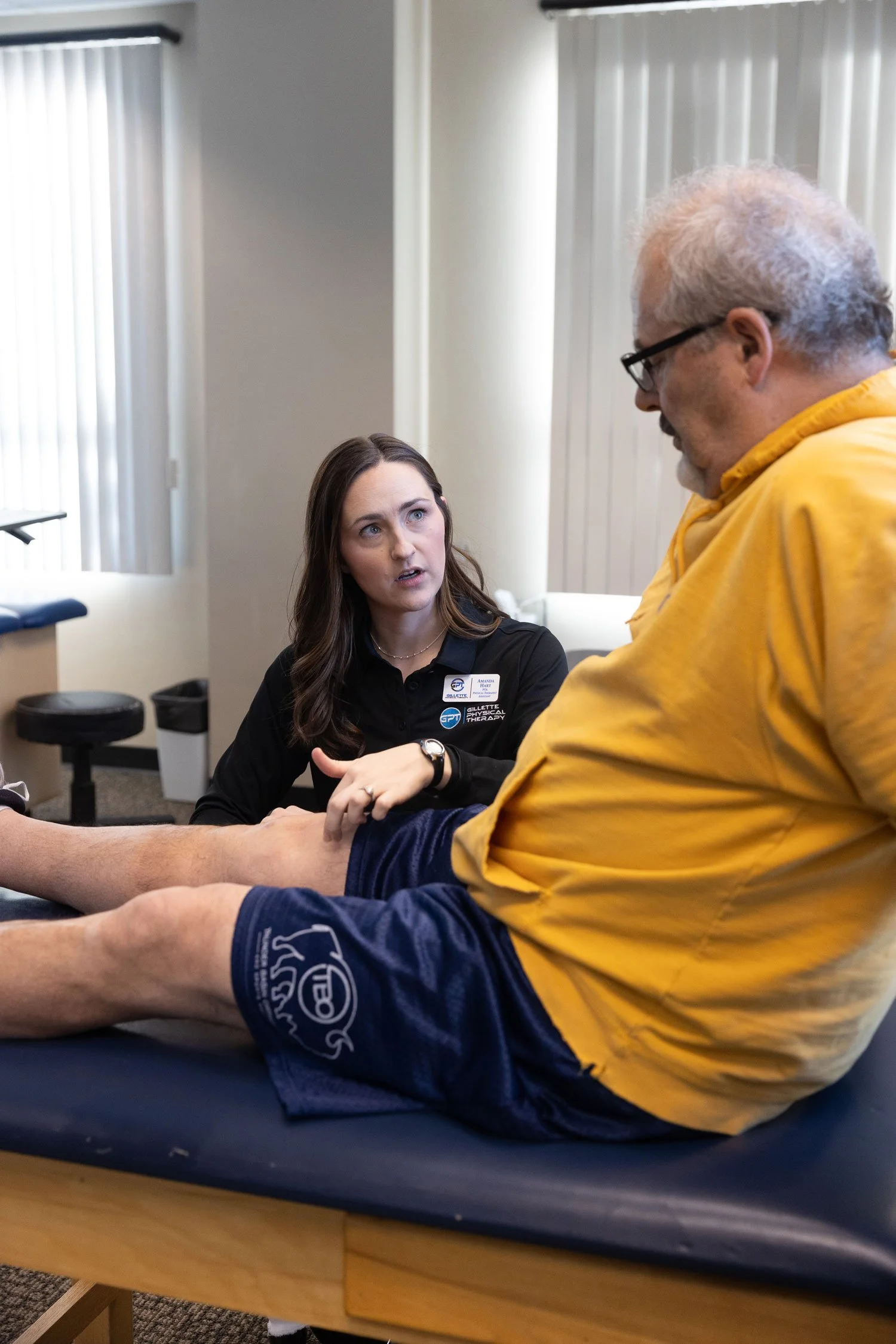Here at Gillette Physical Therapy, we provide expert rehabilitative services for a variety of orthopedic-related conditions. In addition to providing comprehensive, compassionate post-surgical care, our therapists commonly treat numerous non-surgical ailments. Below are commonly treated conditions at Gillette Physical Therapy.
KNEE
Patellofemoral Syndrome
Definition: Pain or discomfort originating from the contact of the back of the kneecap with the femur.
Treatment: Largely dependent on the specific problem causing the pain. An accurate, thorough examination by an experienced Physical Therapist will reveal the source of the pain. Only in more extreme situations is surgery deemed appropriate.
Arthroscopy of the Knee
Definition: A minimally invasive surgical procedure in which an examination and sometimes treatment of damage of the interior of a joint is performed using an arthroscope, a type of endoscope that is inserted into the joint through a small incision.
Treatment: Dependent on the specific condition being treated for. The most common orthopaedic procedure is knee arthroscopy for torn meniscus and/or ACL.
Patellar Tendonitis
Definition: A relatively common cause of pain in the inferior patellar region in athletes. Also known as jumpers knee.
Treatment: Activity modification, bracing if appropriate, conditioning and stretching. A gradual, methodical, supervised loading program has been proven effective to increase tendon strength.
ACL Reconstruction
Definition: A surgical tissue graft replacement of the anterior cruciate ligament, located in the knee, to restore its function after anterior cruciate ligament injury. The torn ligament is removed from the knee before the graft is inserted through a hole created by a single hole punch. The surgery is performed arthroscopically.
Treatment: Protocol includes achieving full range of motion, near normal strength and stability versus non-surgical leg, and restoring normal joint mechanics, kinematics to safely return to sport or work.
Joint Replacement
Definition: A procedure of orthopedic surgery in which the arthritic or dysfunctional joint surface is replaced with an orthopedic prosthesis. Joint replacement is considered as a treatment when severe joint pain or dysfunction is not alleviated by less-invasive therapies.
Treatment: Protocol includes restoration of functional knee range of motion, functional lower extremity strength, and functional balance retraining for safety with return to work or activity on even terrain activities.
SHOULDER
Impingement
Definition: A clinical syndrome which occurs when the tendons of the rotator cuff muscles become irritated and inflamed as they pass through the subacromial space, the passage beneath the acromion. This can result in pain, weakness and loss of movement at the shoulder.
Treatment: Determined by following an accurate and thorough evaluation of underlying causes. The first step is eliminating any identifiable cause or contributing factor. It is the most common shoulder pathology, and in most cases, surgery is not necessary.
Shoulder Instability
Definition: A condition in which the restraining tissues of the shoulder become lax and allow the shoulder to become unstable, thus causing pain.
Treatment: Pending if the instability is only in one direction or multiple directions. A skilled, thorough assessment is required to identify the cause and develop a plan of care for successful treatment.
Arthroscopy of the Shoulder
Definition: A minimally invasive surgical procedure in which an examination and sometimes treatment of damage of the interior of a joint is performed using an arthroscope, a type of endoscope that is inserted into the joint through a small incision
Treatment: Varies dependent on the specific condition being treated for. The most common orthopaedic procedure is shoulder arthroscopy for rotator cuff repair, which would follow a specific protocol for rehabilitation.
RTC Tear
Definition: Tears of one or more of the four tendons of the rotator cuff muscles. A rotator cuff injury can include any type of irritation or damage to the rotator cuff muscles or tendons.
Treatment: If identified early enough, rotator cuff dysfunction can be treated conservatively with a high success rate. The first step is eliminating any identifiable cause or contributing factor.
Labral Repair
Definition: A procedure of orthopedic surgery to repair a portion of the "suction cup" mechanism important for shoulder stability.
Treatment: A small tear may be treated conservatively with proper, supervised physical therapy. Major tears are surgically repaired and treated with physical therapy post operatively.
HIP
Joint Replacement
Definition: A procedure of orthopedic surgery in which the arthritic or dysfunctional joint surface is replaced with an orthopedic prosthesis. Joint replacement is considered as a treatment when severe joint pain or dysfunction is not alleviated by less-invasive therapies.
Treatment: Protocol is dependent on the surgical procedure, anterior or posterior approach, and will include restoration of functional hip range of motion, strength and balance, while teaching precautions, for safe return to work and active daily living.
Trochanteric Bursitis
Definition: Inflammation of the trochanteric bursa, a part of the hip.
Treatment: Treated conservatively with proper physical therapy with the use of modalities to decrease inflammation, and supervised progression of stretching and of the lumbo-pelvic hip complex.
SPINE
Spondylolisthesis
Definition: Displacement of a vertebra or the vertebral column in relation to the vertebrae below.
Treatment: Is determined following a thorough evaluation by a skilled PT. Conservative treatment for restoration of flexibility, stabilization, and range of motion. A gradual, supervised strengthening program has been proven successful.
Stenosis
Definition: Abnormal narrowing of the spinal canal that may occur in any of the regions of the spine.
Treatment: An activity modification to exacerbate the pain. Treated conservatively to regain stability, range of motion and strength. A supervised exercise program has shown to reduce symptoms. If conservative treatments doesn't help, surgery would be an option, and then post-operative physical therapy.
Fusion
Definition: A surgical technique used to join two or more vertebrae. Fusing of the spine is used primarily to eliminate the pain caused by abnormal motion of the vertebrae by immobilizing the faulty vertebrae themselves, which is usually caused by degenerative conditions.
Treatment: A fusion is treated conservatively while the vertebrae fully fuse together. Treatment for restoration of range of motion, strength and stability to get the patient back to a functional level of living.
Laminectomy
Definition: An orthopedic spine operation to remove the portion of the vertebral bone called the lamina.
Treatment: Post operatively to restore functional range of motion, strength and stability for return to work and daily activities.
Cervical, Thoracic, Lumbar Pain
Definition: Generalized pain radiating around the area of the neck, between the shoulder blades or the low back/buttock regions.
Treatment: A thorough, skilled evaluation is necessary to reveal the source of the pain. A supervised, progressive therapeutic exercises program, with modalities as indicated has been proven successful.
Scoliosis
Definition: Condition in which a person's spine is curved from side to side.
Treatment: A supervised exercise program to improve spinal mobility, improve postural flexibility, and improve postural strength and stability has been proven successful.
Whiplash
Definition: Describing a range of injuries to the neck caused by or related to a sudden distortion of the neck.
Treatment: Proper, supervised physical therapy utilizing modalities and soft tissue massage to decrease pain and gradual restoration of the neck's range of motion, strength and stability.
BRAIN
Vertigo
Definition: A feeling of motion when one is stationary.
Treatment: Progressive, supervised restoration of equilibrium to regain safe balance strategies.
Headaches
Definition: Pain anywhere in the region of the head or neck.
Treatment: Pending the specific cause. A comprehensive multi-disciplinary approach, with the medical doctor and physical therapist, will usually decrease symptoms.
FEET AND ANKLES
Plantar Fasciitis
Definition: A painful inflammatory process of the plantar fascia, the connective tissue on the sole (bottom surface) of the foot.
Treatment: Utilization of modalities to decrease pain and inflammation, and orthotics or inserts to decrease pain with walking and gentle exercise program.
Achilles Tendon Rupture
Definition: A rupture can occur while performing actions requiring explosive acceleration, such as pushing off or jumping.
Treatment: Often this requires a surgical repair and physical therapy is performed post operatively. Therapy will follow a specific protocol for rehabilitation.
Chronic Ankle Sprains
Definition: A common medical condition where one or more of the ligaments of the ankle is torn or partially torn.
Treatment: Depending on the level of personal activity desired, chronic ankle sprains may be treated conservatively with supervised strength and stability training and/or bracing. However, a surgical repair of the ligaments may also be needed.
Arthroscopy of the Foot
Definition: A minimally invasive surgical procedure in which an examination and sometimes treatment of damage of the interior of a joint is performed using an arthroscope, a type of endoscope that is inserted into the joint through a small incision
Treatment: Varies depending on the surgical procedure performed. The most common is a repair to fix ankle instability and chronic sprains.
WRISTS AND ELBOWS
Carpal Tunnel
Definition: A syndrome causing pain, numbness and other symptoms in the distribution of the median nerve due to its compression at the wrist in the carpal tunnel.
Treatment: Depending on the length of time of the symptoms, a properly supervised physical or occupational therapy program may reduce symptoms. If unable to treat conservatively, a surgical release is performed with a brief physical or occupational therapy program post-operative.
Fractures
Definition: A medical condition in which there is a break in the continuity of the bone.
Treatment: Treated initially with a surgical repair to stabilize or with bracing/casting. Physical or occupational therapy is performed following a healed fracture to restore range or motion and strength.
Tennis Elbow (Lateral Epicondylitis)
Definition: A condition where the outer part of the elbow becomes sore and tender.
Treatment: Utilization of modalities to decrease pain and inflammation and supervised exercise progression to restore tendon strength.
Golfer Elbow
Definition: A condition where the outer part of the elbow becomes sore and tender.
Treatment: Utilization of modalities to decrease pain and inflammation and supervised exercise progression to restore tendon strength.
OTHER
Pediatric Rehab
Gillette PT has three physical therapists on staff who specialize in treating pediatric patients. Please call our clinic for more information.
Correct Running Assessment
Gillette PT offers expertise in proper running mechanics, shoe wear, nutrition, exercises and injury prevention. Running classes are available, please check the Events tab for start dates.
Performance Enhancement Training
Gillette PT offers 2 certified strength and conditioning specialists, each with over 15 years experience, that provide performance enhancement training to athletes of all ages.

